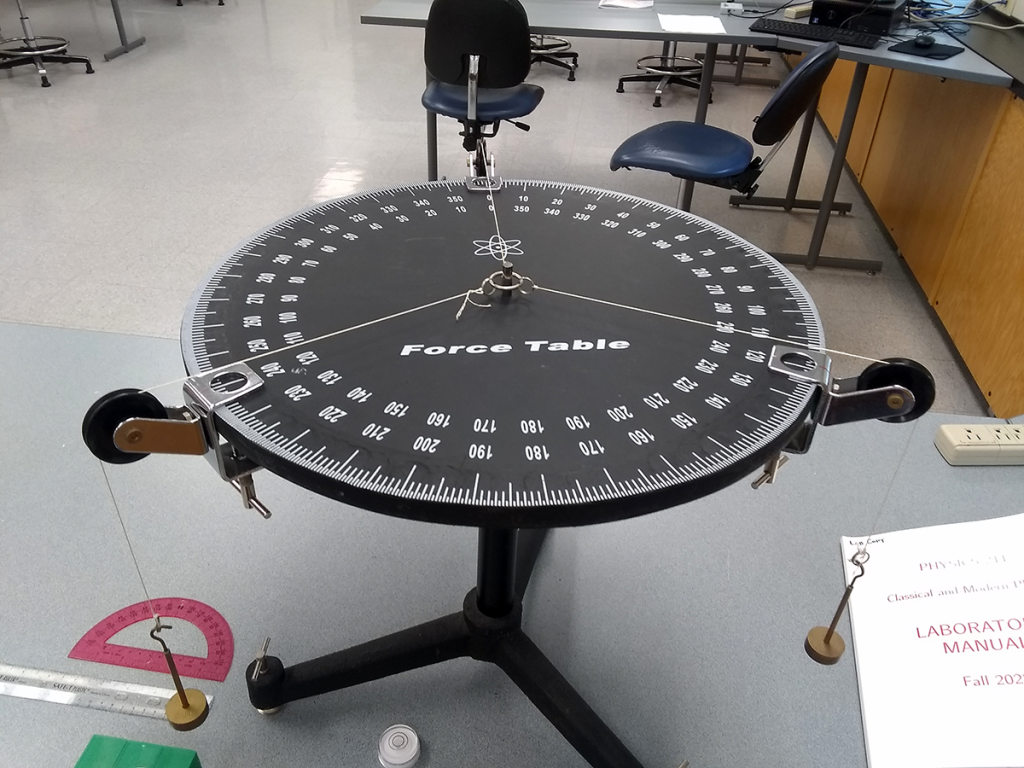
The humble force table. A flat surface, graduated with single-degree marks. Three pulleys which may be clamped at any position. Loops of string connected to a central ring surrounding a post, each of which is pulled by a mass hanger of 50 grams.
Move those pulleys about, slip on some extra masses, and try to keep the central ring from touching the post!
If you’re going by gut intuition (and not just doing the silly trivial 120° spacing with equal masses), be prepared to make mistakes and incremental adjustments. There’s no way you’re nailing this on the first attempt. Slowly making corrections, adding and removing masses, trying to get that central ring to hover just right, it’s fun. Yes, folks, vectors and statics can be genuinely enjoyable.
The students get to explore that, of course, but it’s also an opportunity to learn a bit of Excel. Build your spreadsheet properly, and you can predict the precise angles and masses needed for equilibrium. Set it up and, presto, it works!
As a test, they run it in the opposite direction, too. Set some angles, add some masses, get it to balance. Type those numbers into the spreadsheet, and… it’s not quite right. The math says it’s off, but the ring says it’s fine. Weird! It’s a handy introduction to measurement uncertainty, a tactile illustration of a critical concept.
It’s very cool.